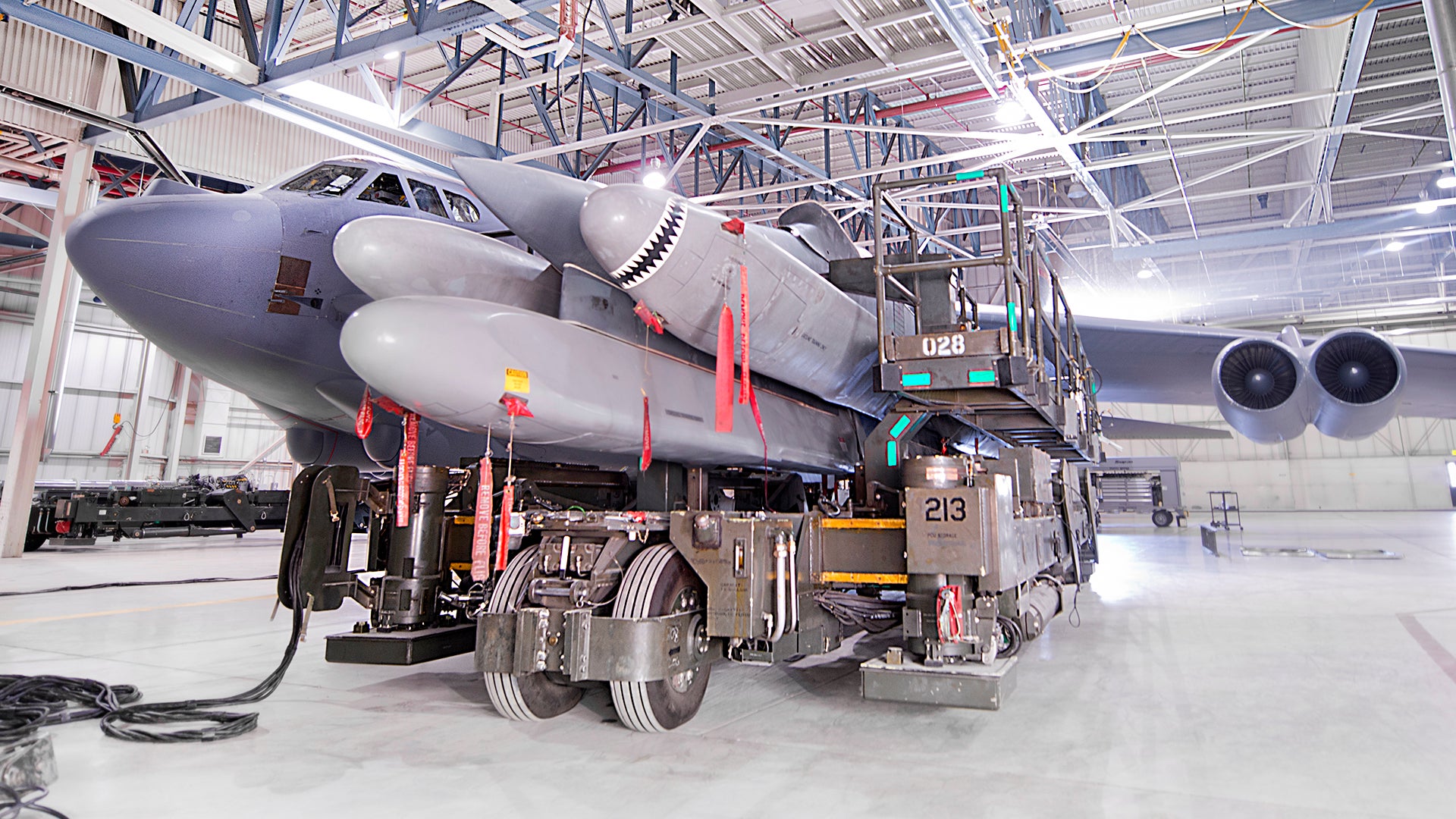The world is still reeling from North Korea’s latest and highly impressive missile test. It isn’t surprising that everyone seems to have a take on the issue, but that doesn’t mean all those takes are really based in reality. Two stories that have been parroted extensively in both defense media and the mainstream media this week have to do with supposedly innovative ways the U.S. could destroy or disable North Korean ballistic missiles during or before entering their boost phase.
One has to do with the use of a cruise missile armed with a microwave pulse emitter that would zap a missile’s electronics and the other has to do with a fighter jet, namely an F-35, actually shooting down a missile with an AIM-120 AMRAAM as it rises towards the heavens. Although both stories make for great headlines, they are in many ways detached from reality.
North Korean missile mitigation like a CHAMP?
This story seems to have originated on the NBC Nightly News and from an associated print report that appeared online on December 4th. It describes how a relatively new technology could be used to zap North Korean missiles in a non-kinetic attack—one that wouldn’t kill any human beings in the process. The report states that the capability came up last August in a White House meeting on what to do about North Korea and their ongoing missile and nuclear development programs. The story states in part:
Could a high-power microwave weapon actually be used against North Korea?
Deptula said he believed the U.S. could use an HPM to disable a ballistic missile on a North Korean launch pad, and that there are many advantages to using microwave weapons in a North Korean scenario.
They work in all weather, said Deptula, which helps in the Korean climate, and “they’re employed at the speed of light. You can’t get much faster than that in terms of achieving desired effects.”
Of course microwave weaponry isn’t really anything new. The Counter-Electronics High-Power Advanced Microwave Project (CHAMP) has been ongoing for many years now, and I did a detailed feature on the program back in 2015. The original NBC report is right in describing the weapons basic concept. This is how I described it previously:
The whole idea behind CHAMP is to be able to destroy an enemy’s command, control, communication and computing, surveillance and intelligence (C4SI) capabilities without doing any damage to the people or traditional infrastructure in and around it. In other words, it can eliminate a facility’s effectiveness by destroying the electronics within it alone, via a microwave pulse, without kinetically attacking the facility itself. Think of it as the mother of all less than lethal weapons.
The effects of a CHAMP are very similar to what would happen during an electromagnetic pulse (EMP) caused by a high-altitude nuclear detonation or by a powerful solar storm, just on a much smaller, more focused scale. Unlike an EMP bomb, which are area weapons and indiscriminate as to who they target within their blast area, CHAMP is really an EMP assassin that comes in and surgically eliminates an enemy’s war enabling technology, barely leaving a fingerprint it was ever even there…
… CHAMP will be a ‘first day of war’ standoff weapon that can be launched outside an enemy’s area-denial/anti-access capabilities, and fly a route over known C4SI facilities, zapping them along its way, before destroying itself at the end of its mission. Because of its stealth design, long-range and is expendable, it will fly where no other assets could and because it does not blow anything up, its use does not necessarily give away the fact that the enemy is under direct attack in the first place. In that sense, it is a psychological weapon, capable of at least partially blinding an enemy before they even know that a larger-scale attack is coming.
CHAMP may have trouble knocking out the most hardened enemy electronic systems, but their sensors are possibly another story. Command and control components and sensors used at surface-to-air missile sites and for integrated air defense system connectivity could be put at great risk…
A few years ago, CHAMP was supposedly migrating from its previous platform, an AGM-86 Conventional Air Launched Cruise Missile (CALCM), to the Air Force’s newest tactical cruise missile, the stealthy AGM-158 Joint Air to Surface Standoff Missile (JASSM), as well as moving from a analogue architecture to a more capable, compact, and flexible digital one. It isn’t clear exactly how far along that program has gotten with either initiative, but suffice it to say, CHAMP is a real capability that could potentially be deployed in low volume if need be.
What followed that NBC report were an avalanche of repostings on the topic, many which featured dubious claims and totally sensational titles. But even the original report raises some eyebrows as to its plausibility.

In order to use CHAMP, or a similar system, the U.S. would still have to fire a cruise missile at North Korea. Whereas having surveillance aircraft and unarmed drones entering a foe’s airspace may be provocative, firing a cruise missile at a high-value target will surely be seen as an act of war. If everything goes as planned, that missile could splash down in international waters after its payload causes its electrical mayhem, but there are no guarantees that this will occur. Cruise missiles have become more reliable in over the last few decades, but they still go awry at a substantial rate.
Additionally, as even the NBC report points out, the missile would likely have fly very close to the missile for it to have its desired effect. Considering that security is at its very highest, and all eyes are on the missile prior to launch, it’s not as if the screaming sound of a jet powered cruise missile flying just dozens of feet off the ground and right over the focus of everyone’s attention won’t go unnoticed. This is especially true when the lights turn off and key electronic systems fail or go totally haywire immediately following the missile’s pass.

There is also the question of when to hit the missile with CHAMP’s microwave pulse. The idea presented is that it would be struck when the missile is on its launch table. This would require time sensitive targeting and a very truncated kill chain to accomplish. Detecting the missile’s position pre-launch is one thing, and even surveilling it visually prior to being fired is a shadowy but established capability. But surveillance and strike are two different things.
Having an aircraft loaded with this exotic weapon and timing the cruise missile launch so that it makes it to its target at subsonic speeds before the missile is fired is problematic and rife with unknowns. Not to mention hitting the missile with a massive electronic pulse while it is being fueled or is fueled could possibly result in just as disastrous an explosion than if it were attacked directly via more traditional “kinetic” means.
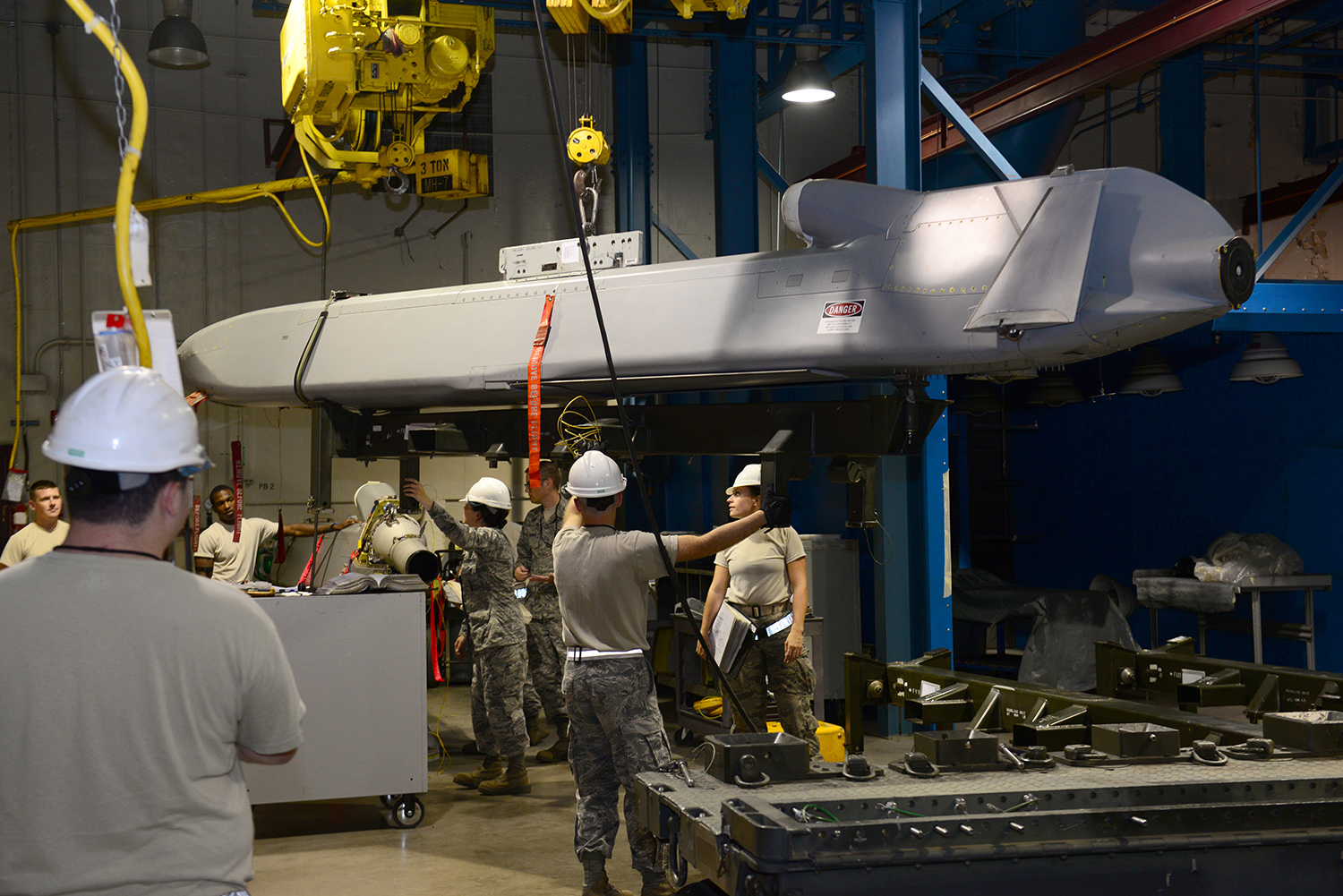
All this adds up to what is clearly an unattractive, if not somewhat implausible, option for dealing with North Korea’s missile tests. Standoff jamming and cyber attacks, especially targeting the data-links and radar that provide North Korean scientists with missile telemetry, onboard diagnostic information, and video seems like a much more attractive option when it comes to applying a non-invasive tactic aimed at slowing the rogue state’s missile development momentum.
Another option could exist that would make use of a high-powered microwave weapon less risky and more plausible. If this technology has been adapted clandestinely by the USAF or the CIA to be placed on an unmanned aircraft—especially one that can penetrate and loiter over enemy airspace undetected for long periods of time—most of the tactical and operational issues related to CHAMP could be overcome.
Of course both the USAF and the CIA have an aircraft that can do just that in the RQ-170 Sentinel, which has supposedly been deployed to the Pacific and supposedly to the Korean Peninsula in the past. And really, gathering intelligence of nuclear and missile proliferation and monitoring rogue regimes are all part of the flying wing’s core mission set. So it is more likely than not that it has flown sorties over North Korea and likely continues to do so.

Watching missile development sites and tests at close range is also right up the RQ-170’s alley, and we know that the US has had “eyes on” these events in the past as we me mentioned earlier. We have also written about reports of exotic electromagnetic weapons being used on battlefields in the Middle East and Africa for similar purposes. If a similar microwave pulse capability, maybe even one using a more flexible AESA array as an emitter, has been miniaturized and adapted as a payload for unmanned aircraft, then it would represent a far more attractive non-kinetic solution for sabotaging North Korea’s missile launched than using CHAMP. And considering an RQ-170, or similar stealthy drone would possibly be already overhead, putting such a payload to use seems like a logical and less risky step.
Such a capability could be factored into North Korea’s launch plans though, as they have been testing their missiles just outside of Pyongyang as of late, instead of at various remote locations around the country as in the past. The North Korean capital’s airspace is the most heavily defended in all of North Korea, with the country’s most potent fighter aircraft—aging MiG-29s—and surface-to-air missiles being based there.
Still, heavily defended airspace hasn’t stopped the RQ-170 from operating before, as it was used to survey some of Iran’s most sensitive nuclear sites as well as infiltrate deep into Pakistani airspace to watch Bin Laden pace around in his courtyard. And we do know that there is a discreet test site based in the highly secured Nevada Test and Training Range for exotic unmanned aircraft payload testing. Adapting a highly directional microwave weapon, even one that doesn’t possess CHAMP’s power, to be used on a reusable and hard to detect unmanned aircraft would likely be at the top of the CIA and/or the Pentagon’s wishlist. And there is undoubtedly major clandestine initiatives regarding similar capabilities underway. But still, we can’t be certain if anything like this is fielded in an operational form.
Eventually a laser toting, high-flying drone should be able to knock North Korea’s missiles out of the sky during their boost stage, but that capability won’t be ready for half a decade or more at the very least. It may be possible to put a much lower-power laser on a penetrating drone before then—one that is capable of disabling or destroying a North Korean missile on the pad or during launch, albeit at much closer range—but even that is likely outside the realm of possibility at this time.
Regardless of these other theoretical possibilities, the idea that a CHAMP wielding cruise missile is some new panacea for North Korea’s missile program doesn’t hold water, and it’s frustrating seeing so many outlets depicting it otherwise without giving it any critical thought whatsoever.
Swatting down North Korean missiles like Lightning?
Another idea that has been gaining surprising traction in the media involves using F-35 Joint Strike Fighters armed with regular AIM-120 air-to-air missiles to shoot down North Korean ballistic missiles during their boost phase right after launch. It’s attractive idea, in theory, since it would neutralize the missiles at their most vulnerable point, when they are still moving relatively slowly and the rocket motor is burning steadily, making them inherently easier to track and intercept.
In November 2017, Duncan Hunter, a Republican Representative from California, highlighted the concept of using F-35s and AIM-120s, also known as the Advanced Medium-Range Air-to-Air Missile or AMRAAM, as a potential near-term solution to the North Korean missile threat, citing unspecified studies from the U.S. government’s Los Alamos National Laboratories and other groups. On Dec. 5, 2017, Northrop Grumman disclosed the results of one such test, known as FTX-20, to a group of journalists at the firm’s offices in Linthicum, Maryland.
“It’s like an act of God,” Hunter had said at a missile-defense conference in Washington, D.C., in November. “You have F-35s, you have AMRAAMs, and you can shoot these things down as they go up.”
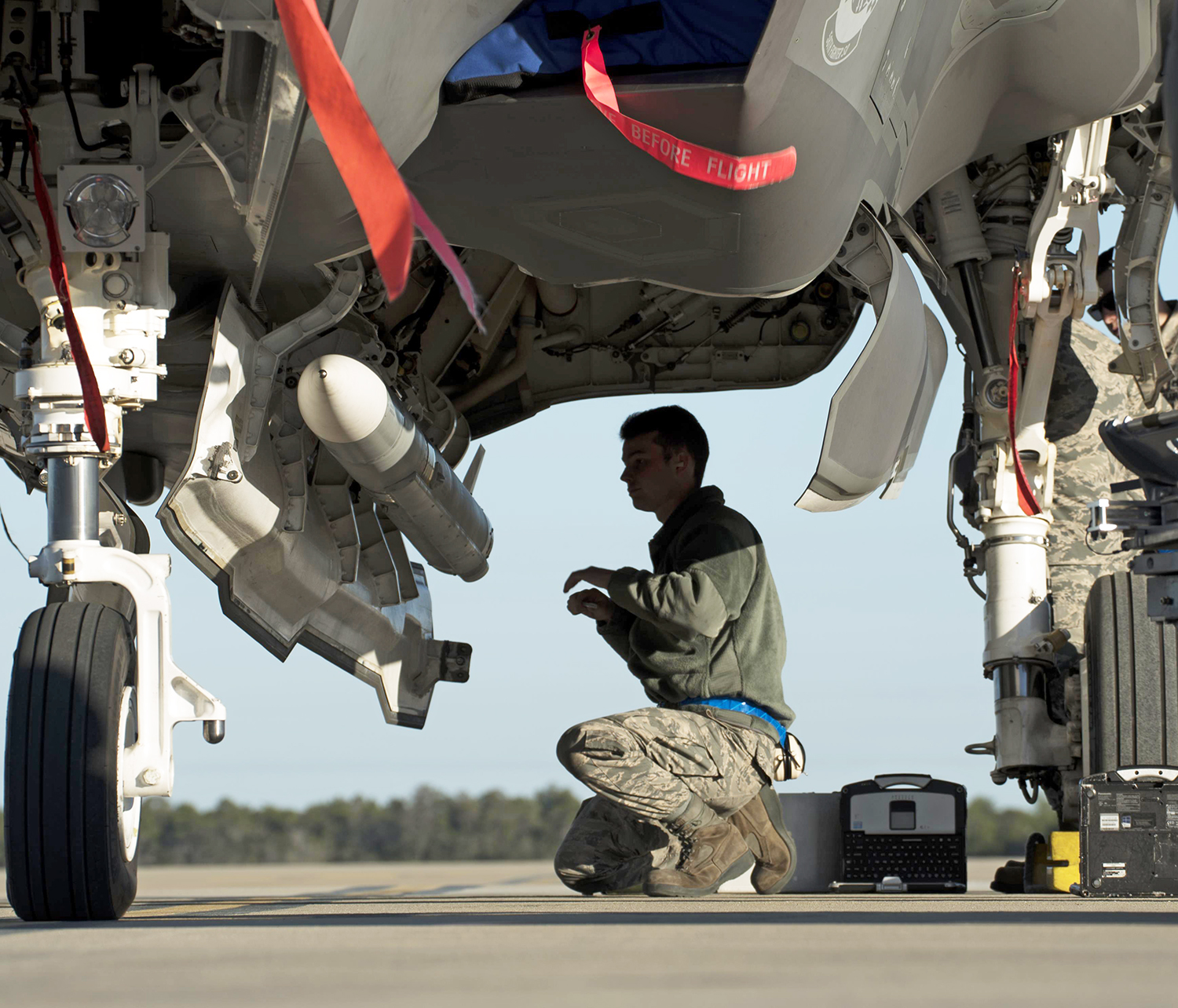
On Oct. 16, 2014, Northrop Grumman and the Missile Defense Agency demonstrated the F-35’s Distributed Aperture System, or DAS, ability to detect and track a ballistic missile immediately after launch using a surrogate aircraft with the same equipment. DAS consists of six cameras positioned around the Joint Strike Fighter that give the pilot 360 degrees of situation awareness and project an image on their helmet-mounted display that allows them to “see” in all directions, even “through” the aircraft itself. The system, with its always watching “stitched together” panoptic sphere of vision, also can detect potential threats and can even identify targets autonomously, cueing the jet’s higher fidelity sensors to those objects.
During the experiment, the test aircraft then shared its information with other sensor nodes to accurately show the ballistic missile’s most likely trajectory. According to the Virginia-headquarters defense contractor, this data could then aid space-based assets in tracking the missile as it continued on its way or help cue interceptors on the ground or at sea.
“You can give that information to a shooter,” John Montgomery, a business development manager with Northrop’s Intelligence, Surveillance, and Reconnaissance & Targeting Division, told reporters, according to Defense One. “That shooter now has information to go and put his information in the right place. Thus the radar doesn’t have to search. It goes, ‘I know where it is, it’s right there.’”
One logical extension of the concept would be to simply have the F-35 use that data itself to cue up its own AIM-120s or future air-to-air missiles. The up-coming AIM-120D—and likely any similar weapon going forward—will feature a two-way data link that will allow pilots, and even third party sensor sources, to feed it course-corrections and keep an eye on its progress during the engagement, thus further improving the probability of scoring a kill.


But despite what Representative Hunter and other supporters of this idea might hope, this concept is still very far away from ever being a reliable method of intercepting a ballistic missile. Northrop Grumman itself said that they had waited so long to disclose the results of the FTX-20 experiment because they weren’t entirely sure the outcome was actually significant.
“We wanted to get our understanding of how this could change the battlefield,” Montgomery said. “We’ve since done a series of modeling and [simulation] events and teamed with other governmental partners and industry.”
This particular ballistic missile defense scheme might work well in a laboratory environment, but that’s no guarantee it will work under real world conditions. At present, the concept Northrop Grumman described requires a significant number of assets to be well situated near the launch site in advance.
For one, the plan requires two F-35s, not one, to be within range to use the DAS. The pair is necessary in order to actually fix the likely trajectory, something one of the stealthy fighter jets can’t do on its own. In 2012, testing did demonstrate a single Joint Strike Fighter’s basic ability to use the system to spot and track a moving ballistic missile, which could help cue the a single jet’s radar onto the target in an attempt to track it three dimensionally.
If the planes were to engage the target themselves, they would similarly have to be close enough to fire their own missiles at it. Depending on the launch site, this could require getting deep into the range of North Korea’s dense air defense networks, which aren’t entirely as dated as many believe. The F-35 is low observable, but that doesn’t mean it is invisible to radar—especially from its rear aspect. SAM systems operating on longer wave lengths could potentially detect the stealth jets orbiting overhead waiting for a launch to occur.
The boost phase window varies from missile to missile, but its typically less than five minutes, and the opportunity for a successful engagement will be far shorter than that. This could require pairs of F-35s to be in the air, or at least on very short notice alert, to have even a chance to strike, a potentially demanding and costly proposition. Just locating where the launch would occur would have to happen fairly rapidly via the ornate menagerie of reconnaissance platforms that keep an eye on North Korea day in and day out.
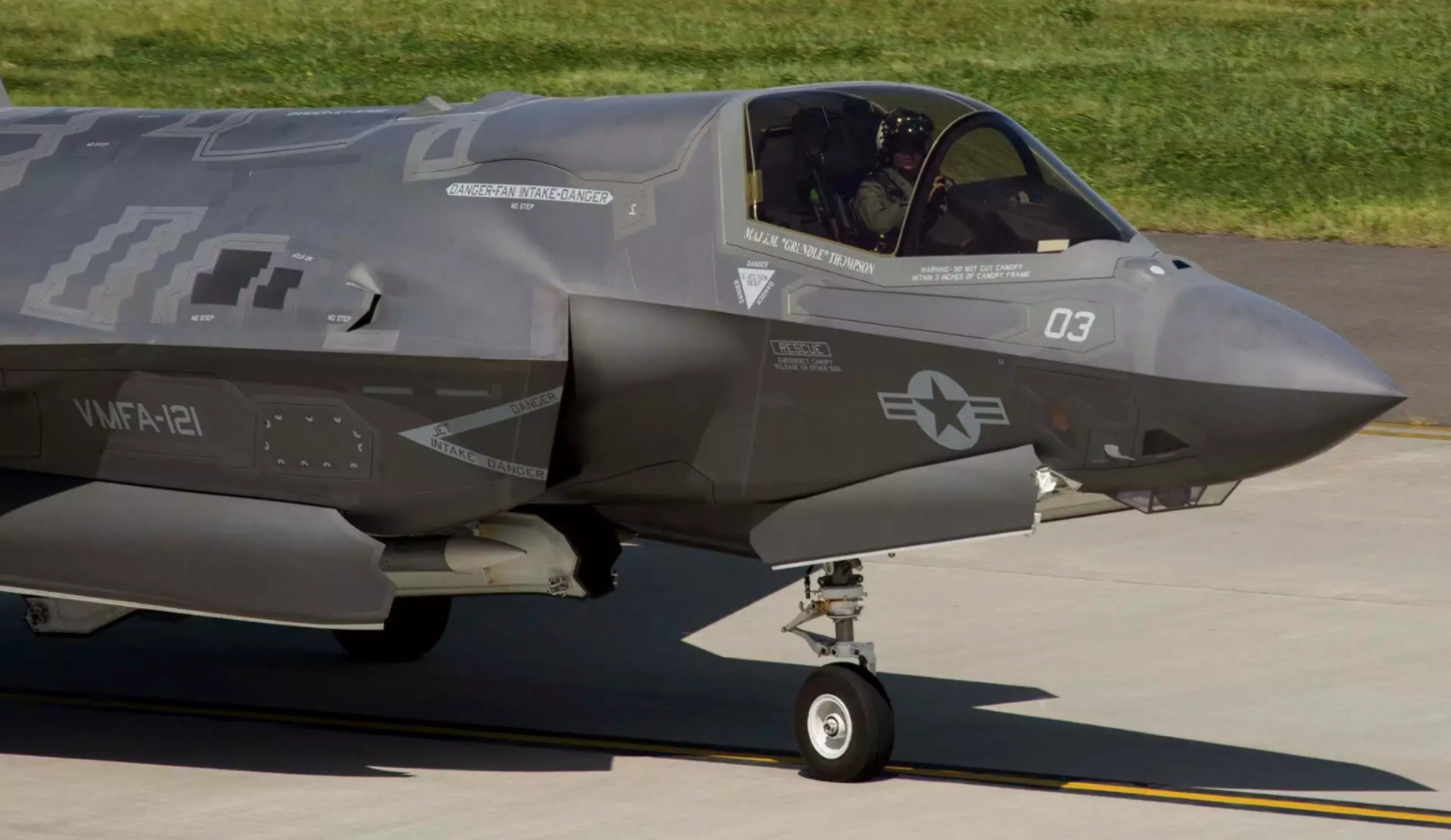
“You’d have to get very lucky,” Jeffrey Lewis, an expert on missiles and nuclear weapons at the Middlebury Institute of International Studies at Monterey in California told Motherboard. The overall idea is “cray cray,” he added.
The reality is that an AIM-120 has a fairly short burn time before it relies on its inertia to cruise to its target, meaning that it hits peak speed and altitude quickly and then it’s all downhill from there. On the other hand, a ballistic missile does the opposite. It’s like a freight train getting up to speed, starting out very slowly and building in speed and altitude as time ticks on. As such, an F-35 would have to be nearby and able to get a track on the missile right as it begins its ascent for an AIM-120 to have any shot at actually catching it on its way up into the upper atmosphere.
It might be more feasible to use the F-35 and the capability offered by the DAS to act as a sensor node feeding additional information to Aegis Ballistic Missile Defense ships or Ground-based Midcourse Defense interceptors. It still wouldn’t necessarily help if those assets weren’t already properly positioned to intercept the missile as it flew toward its final target, and the U.S. has spaced-based assets to quickly detect and track missiles in their boost stages anyways.
So this just isn’t that feasible. Future air-to-air weapons, such as the very long-range boosted variety, or even MBDA’s Meteor with its throttleable ramjet engine to small degree, would have a better shot of executing such a demanding task.
And we are just talking about intercepting test launches of immature missile systems here, not of operational road mobile ones, or even those that feature feature solid fuel and can be setup and launched within a matter of minutes, not hours. So even the thought of using this type of idea as an operational counter to a North Korean ballistic missile barrage is laughable.
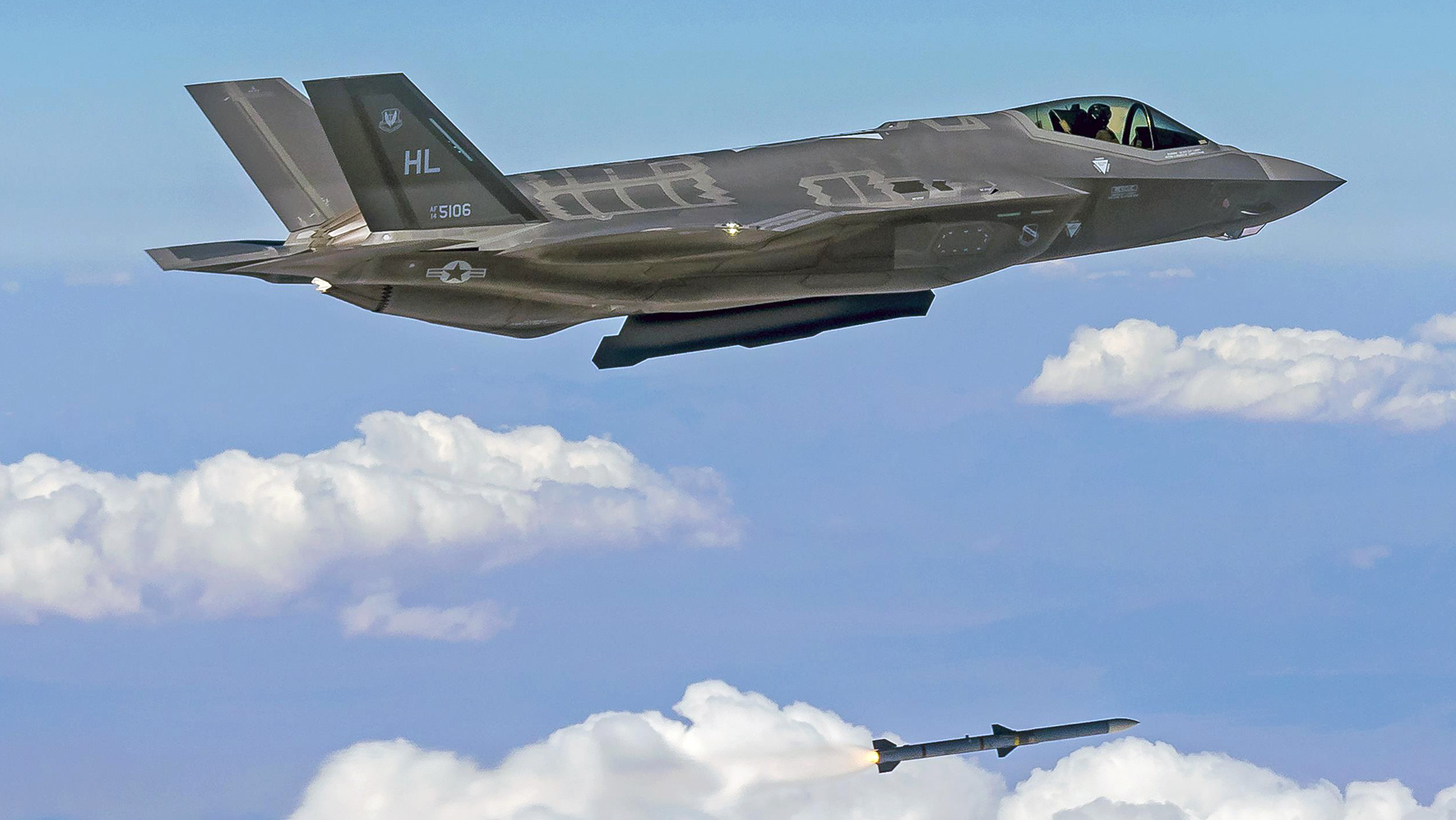
Beyond that, there’s just a political dimension. As noted, a boost-phase intercept over North Korea could involve flying over the country in most cases. Kim Jong Un and his regime in Pyongyang already routinely accusing the United States and its allies of plotting invade the country and assassinate him and other leadership figures. Not to mention that Chinese and Russian governments already complain about American ballistic missile defenses sprouting up near their borders.
More worryingly, a pair of F-35s, or more, shooting down a ballistic missile would be a powerful statement, but it is also one the North Koreans could interpret as an act of war, touching off what almost everyone agrees would be a disastrous conflict for everyone involved. If nothing else it would vindicate the regime’s defiant and belligerent position and could give them a propaganda victory, especially if innocent civilians find themselves caught in the crossfire, injured or killed by falling missile parts.
And what if the F-35s miss? Even if the launch was just a test, it would be humiliating for the United States to have its most advanced aircraft appear impotent in the face of North Korea’s rapidly advancing ballistic missile technology. It would be another blow to an already rickety ballistic missile defense “shield” that has yet to conclusively prove itself in anything approaching a real world situation, as well.
So, while it might not be impossible, the idea of using F-35s to shoot down North Korea’s ballistic missiles isn’t that plausible. It also relies heavily on having right pieces in the right places at the right time, and there is significant risk in doing that even before a trigger is pulled. And even if the plan worked as intended, the backlash could easily make a bad situation far, far worse.
Contact the authors: Tyler@thedrive.com and jtrevithickpr@gmail.com
